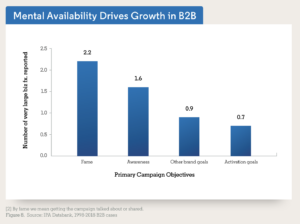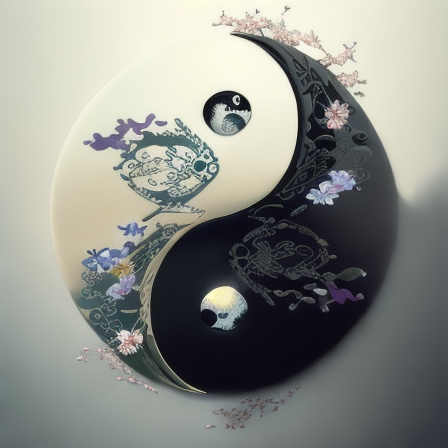When working in marketing, it’s undoubtedly true that we need to appeal to the emotions of our target audience. Even B2B brands started to realize that fame is a valid strategy – interestingly this shift was driven by facts in this case performance data.

If we decide to use this data-driven starting point to look back for a moment, we will realize that the dichotomy between reason (or „ratio“) and feelings (or emotions) is a longstanding topic of discussion in philosophy, psychology, and other disciplines. Let’s dive into this:
Historical Perspective:
- Ancient Philosophers: Philosophers like Plato and Aristotle often emphasized the importance of reason as the highest human faculty. Plato, for instance, likened reason to a charioteer guiding two horses, one representing noble passions and the other representing base desires.
- Enlightenment Era: The Enlightenment period placed a strong emphasis on reason, logic, and scientific inquiry as the primary means to understand and improve the world. Emotions were often seen as secondary or even as obstacles to clear thinking.
Over the centuries this perspective changed. Driven by research and an open mind, people realized it’s not so easy to separate the two. Even though the fact of the importance of mental health is a rather new one – to be accepted by a wider audience in Western societies, we still can say that this development slowly arrived over the last 100 years.
Modern Understanding:
- Interconnectedness: Modern psychology recognizes that reason and emotion are not entirely separate but are deeply interconnected. For instance, Antonio Damasio’s „somatic marker hypothesis“ suggests that emotional processes guide (or bias) behavior and decision-making.
- Emotional Intelligence: Daniel Goleman popularized the concept of emotional intelligence (EQ), which emphasizes the ability to recognize, understand, and manage our own emotions and to recognize, understand, and influence the emotions of others. High EQ is seen as crucial for effective interpersonal interactions and leadership.
- Neuroscience: Brain imaging studies show that regions associated with reasoning (like the prefrontal cortex) and emotion (like the amygdala) are interconnected and often activate simultaneously during decision-making processes.
But what does this mean?
Implications:
- Decision Making: While we often believe we make decisions based on pure logic, our emotions play a significant role. For instance, people might buy a product not just because of its features (logical reasoning) but because of how it makes them feel (emotion).
- Moral Judgments: Studies have shown that moral judgments often involve a mix of reasoning and emotional responses. For instance, we might logically understand an action to be harmless, but our emotional response might still deem it „wrong“ or „unsettling.“
- Art and Culture: While logic and reason play roles in understanding and creating art, it’s the emotional response that art evokes that often determines its impact and value to individuals and societies, which is especially true for – well – marketing.
Having done a ton of work for B2B companies in the past I still have to raise my voice at this point. Which I’d like to introduce with a quote from Einstein. „Wissenschaft ohne Religion ist lahm, Religion ohne Wissenschaft blind.“ Science without Religion is lame, Religion without science blind.
Translating this to B2B marketing, I’d recommend the following: fame, high glossy campaigns, a well-known crazy CEO, and other campaigns can drive the recognition and reach of a B2B brand, but without a good and sound second communication layer also conveying the actual advantages of e.g. our machine or insurance over one of our competitors it won’t do anything to convert this reach into actual sales. So we are back to the actual positioning. To a technological advantage, to better features, higher quality, or longer warranty. To be clear it’s not about one or the other. It’s about the very old concept of Ying and Yang. Having a bit of approachability in our factsheets while also including the right amount of facts in our emotional hook to make our brand stand out. This is called professionalism, which brings me to a post I read on LinkedIn only yesterday (sry that it’s only in German):
I’ve translated it for you:
“ Hello, we are here on a business network! Is LinkedIn becoming more and more social? Facebook 2.0? Users report about their hobbies, leisure activities, family, etc. Great, all that’s missing are the flowery pictures of mom. 💐 But seriously, why do creators do that? Isn’t that unprofessional? Or clever? 🤔 Spoiler: I think it’s very clever! They show personality. And personality sells. Imagine Britta is looking for support on LinkedIn as the CEO of company XY. She is a big soccer fan of Dortmund. You as Texter:in keep telling her about your former soccer career and that you still passionately go to the stadium. There are 98238 Texter:in. So why should Britta come to you? She has a connection to the topic of soccer, finds you likeable and asks you. People follow people, not companies. Personality is becoming more and more important in business. Without personality, you become interchangeable. Whether you like it or not. When will you start with personal content on LinkedIn? PS: Robert and Michael interview I found super but the hook „tips how you can eat 1kg fries without gaining weight“ I unfortunately could not answer either 😂. #personality #personalbranding #strategy“
I think this post is not wrong but it’s one-sided and it misses out on a big part of the world. It misses out on fact-based businesses. It misses out on everybody who is not working in the creative industry. It neglects everyone who develops better tools, better machinery, and better software. As mentioned before I don’t recommend basing a strategy only on being the highest quality producer of something, but I think its highly dangerous to base it just on something like fame.
Some industries simply don’t work like this. It might be clever to appeal to the highest reach by posting only emotional content if you don’t deliver after that, in the worst case people will get hurt.
It might be that I am losing the point of this article a bit now, but I want to make a point here by. During the last elections, all of us were complaining about alternative facts lies, and their impact on voters still we promote pushing more emotional content on social. We are all fed up with climate change deniers and their unscientific opinions while we all share an inspirational post of something our kids did during our last holidays in Hawaii and therefore ignore the fact that we probably got there by plane. We complain about the fast fashion trash mountains and the great Pacific garbage patch we see on social while we all like that Kendall Janner wrote us an e-mail and is interested in wearing our collection (@Saintsass) while she is one of the worst persons for climate because she constantly uses her private jet. This is the facts we all choose to ignore. And these facts matter.

And I would like to give you one more example of too much of one side being dangerous. Ocean Gate.

Ocean Gate started as a submarine company that wanted to break the rules – unfortunately also engineering and physics rules. Their marketing and comms were purely based on the incredible adventures lying ahead for the passengers. Well – we all know what happened next. The sub imploded. It’s probably the most extreme point I can make in the wish to be a little more fact-based and a little bit less inspirational on the – currently – last left professional business social network. LinkedIn.
So coming back to the initial question. From a professional marketing perspective, yes it’s great – it’s super clever to appeal to the emotions of our target audience. To reach for fame. To use influencers as much as possible. It will help you grow. It will help your brand and your business. but the question is how long will it do so if you cannot deliver on the actual promise of your brand. For a B2B brand, this might be the quality of your machines. For a submarine company to be able to actually bring back your passengers alive and for a B2C brand promising equal rights for women this might be well – equal rights – but not just for rich western middle-class girls…
Bringing it all together.
Balancing the Two:
- Complementarity: Emotions can provide rapid, intuitive judgments about situations, while reason can help evaluate and refine those judgments.
- Potential Conflicts: There are times when what we feel might conflict with what we think is right or logical. Recognizing such conflicts and reflecting on them is crucial for personal growth and effective decision-making.
- Cultivating Both: Just as we can train our logical and reasoning abilities, we can also cultivate emotional awareness and regulation through practices like mindfulness, meditation, and therapy.
Very often in marketing, we also talk about being real. Promoting actual topics that are honest. And we should do so. All of us. Our world and business are constantly getting faster and faster. And I honestly think we miss out on some moments where we should actually pause. Rethink. Reconsider and then make the decision.
You might have realized this article actually tries to mix both of them. What do you think? Does the end justify the means?
